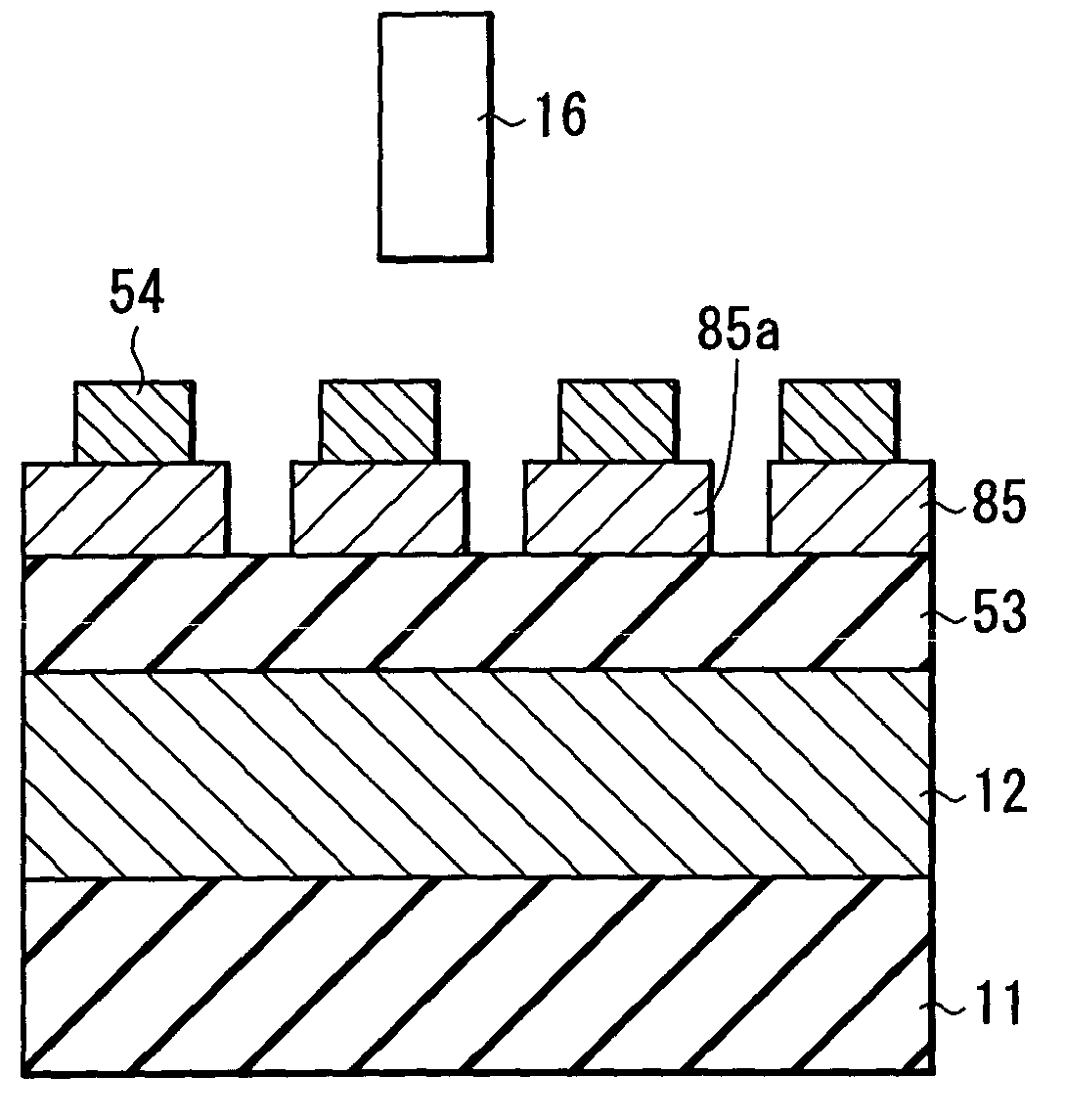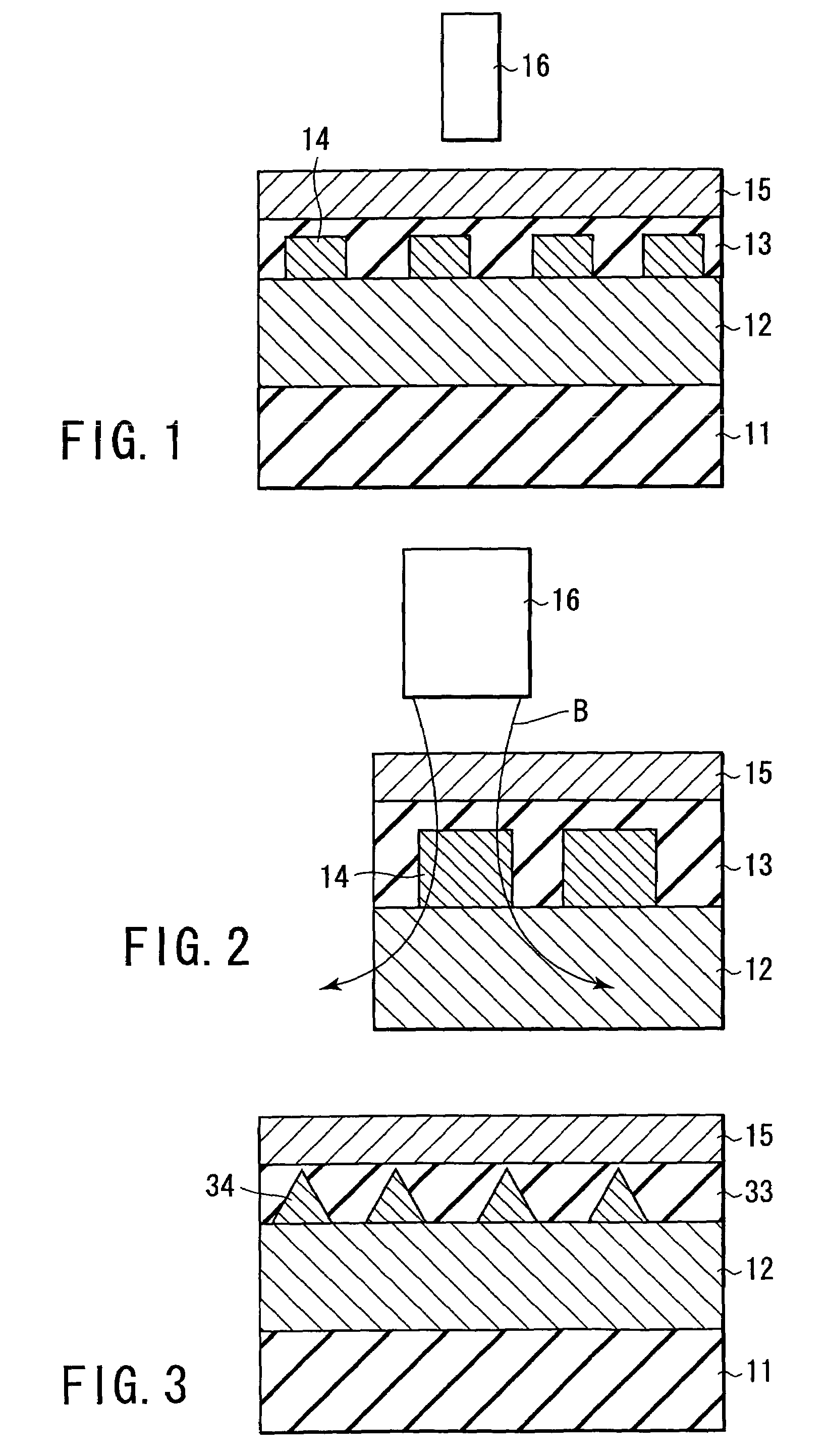Perpendicular magnetic recording medium
a technology of perpendicular magnetic and recording medium, which is applied in the field of can solve the problems of affecting the improvement of the recording density of the perpendicular magnetic recording medium, affecting the accuracy of the perpendicular magnetic anisotropy, and affecting the accuracy of the perpendicular magnetic recording layer. , to achieve the effect of high reliability
- Summary
- Abstract
- Description
- Claims
- Application Information
AI Technical Summary
Benefits of technology
Problems solved by technology
Method used
Image
Examples
example 1
[0076]FIG. 1 is a cross-sectional view schematically showing the structure of the perpendicular magnetic recording medium for this Example. The perpendicular magnetic recording medium was manufactured as follows. In the first step, a NiAl film (not shown) having a thickness of 10 nm, a soft magnetic underlayer 12 of a FeSiAl film having a thickness of 100 nm, and a carbon film (not shown) having a thickness of 2 nm were successively deposited by sputtering on a glass disk substrate 11 having a diameter of 2.5 inches. The NiAl film was intended to control the orientation of the FeSiAl film formed thereon. Then, a resist was applied thereon, followed by forming a resist mask, in which square openings each sized at 40 nm-square were arrayed at an interval of 40 nm in the circumferential direction of the disk, by the technology similar to ordinary lithography.
[0077]In the next step, a CoZrNb film, which was used for forming the soft magnetic dots 14, was deposited in a thickness of 30 n...
example 2
[0080]FIG. 4 is a cross-sectional view schematically showing the structure of the perpendicular magnetic recording medium for this Example. The perpendicular magnetic recording medium was manufactured as follows. First, a soft magnetic underlayer 12 of a multi-layered structure was deposited on a glass substrate disk 11 having a diameter of 2.5 inches by repeating ten times the formation of a unit consisting of a Fe film having a thickness of 8 nm and a carbon film having a thickness of 2 nm by sputtering. Then, a CoZrNb film having a thickness of 30 nm, which was to be processed into soft magnetic dots 14, and a carbon film having a thickness of 1 nm (not shown) were successively deposited. Further, the CoZrNb film and the carbon film were processed by FIB (Focused Ion Beam) so as to form a pattern in which oblongs each sized at 30 nm×20 nm were repeatedly formed at an interval of 30 nm, followed by depositing an Si—N intermediate layer 23 in a thickness of 10 nm. Then, a unit cons...
example 3
[0083]FIG. 3 is a cross-sectional view schematically showing the structure of the perpendicular magnetic recording medium for this Example. The perpendicular magnetic recording medium was manufactured as follows. In the first step, a NiAl film (not shown) having a thickness of 10 nm, a FeSiAl film having a thickness of 100 nm, which was to be used as a soft magnetic underlayer 12 and to be processed into soft magnetic dots 34, and a Pt film (not shown) having a thickness of 2 nm were formed successively by sputtering on a glass disk substrate 11 having a diameter of 2.5 inches. The NiAl film was intended to control the orientation of the FeSiAl film formed thereon.
[0084]In the next step, a resist was applied thereon, followed by processing the resist by pressing a stamper prepared in advance, which had a concentric groove pattern of a groove width of 150 nm, against the resist so as to form concentric grooves in the resist. Then, a PS-PMMA diblock copolymer was applied thereon, foll...
PUM
| Property | Measurement | Unit |
|---|---|---|
| thickness | aaaaa | aaaaa |
| roughness | aaaaa | aaaaa |
| flatness | aaaaa | aaaaa |
Abstract
Description
Claims
Application Information
 Login to View More
Login to View More - R&D
- Intellectual Property
- Life Sciences
- Materials
- Tech Scout
- Unparalleled Data Quality
- Higher Quality Content
- 60% Fewer Hallucinations
Browse by: Latest US Patents, China's latest patents, Technical Efficacy Thesaurus, Application Domain, Technology Topic, Popular Technical Reports.
© 2025 PatSnap. All rights reserved.Legal|Privacy policy|Modern Slavery Act Transparency Statement|Sitemap|About US| Contact US: help@patsnap.com



